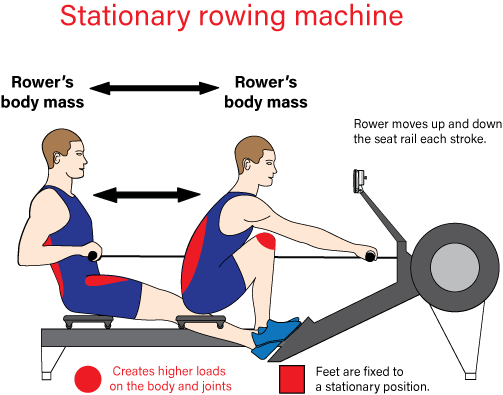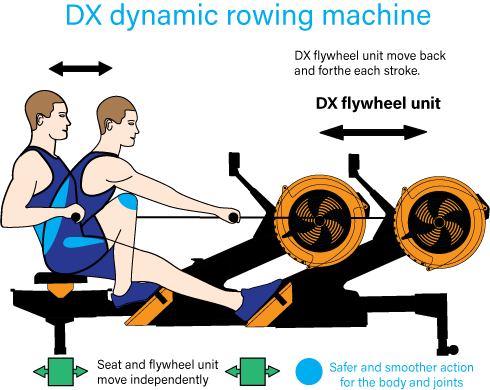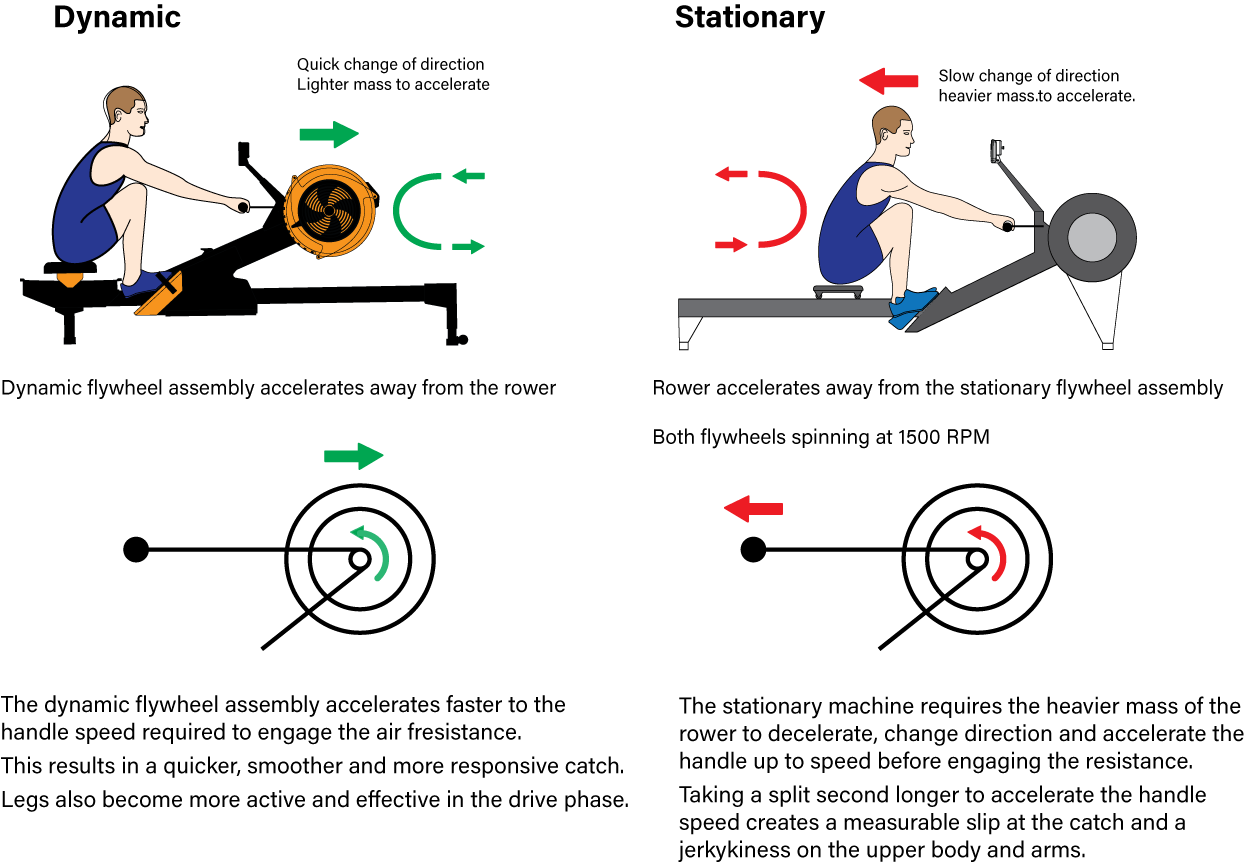Why dynamic?
While there are many rowing machines to choose from, very few of them have the dynamic rowing movement.
The benefits of dynamic rowing movement are:
- Significantly less stress and strain on the lower back and joints compared to a stationary rowing machine.
- Ultra smooth and fluid stroke cycle – no slip or jerk at the beginning of stroke.
- Engages the leg muscles proportionally more by using a push not pull action.
- Strengthens core stability and improves posture.
- Encourages good rowing technique and coordination.
- Provides the most realistic rowing simulation and feel.
Stationary vs Dynamic
On a stationary rowing machine the rower has to accelerate and decelerate their total body mass each stroke. This constant changing of direction increases the work the body has to do which in turn increases the rate of muscular fatigue as the body tires, exposing the rower to greater risk of injury.
As rowing is a repetitive exercise, the higher concentration of load generated by rowing on a stationary machine puts more wear and tear on the body and is very different to the biomechainics of rowing a boat on the water.
The dynamic movement of the DX significantly reduces the risk of injury by loading your body in a much safer and more natural way.
On a dynamic machine, instead of moving your body mass back and forth, the dynamic frame of the machine which is substantially lighter than your body, moves instead.
Therefore the initial loading absorbed by the lumbar spine during the drive phase is much lower, and your body does not have to be decelerated at the finish by the hip flexors or by the knees at the catch.
The big advantage of the DX is how the reduced loading and rate of fatigue preserves the body, improves the ability for you to train safely, regularly and for longer distances. Even if you only use a rowing machine for a short workout or warm up you will feel a significant difference and benefit.
No more sore backs from rowing!
The mechanics behind a quick catch


